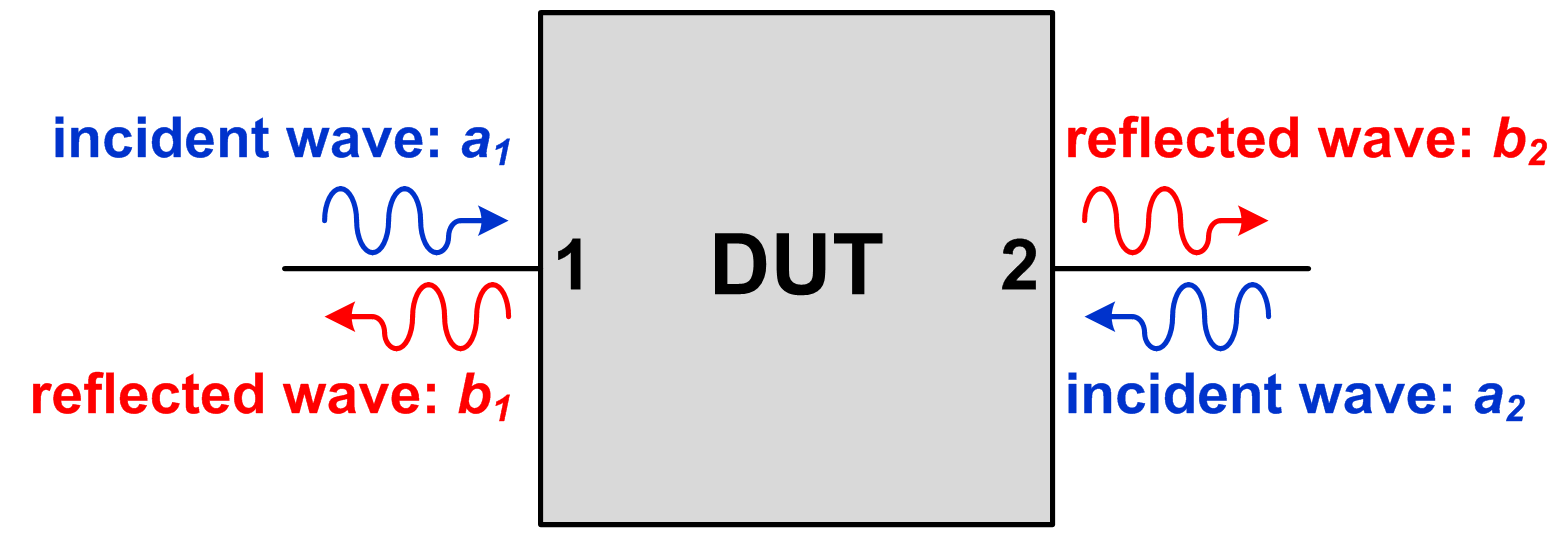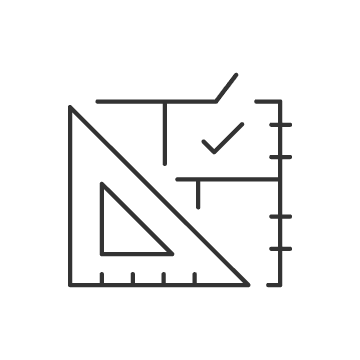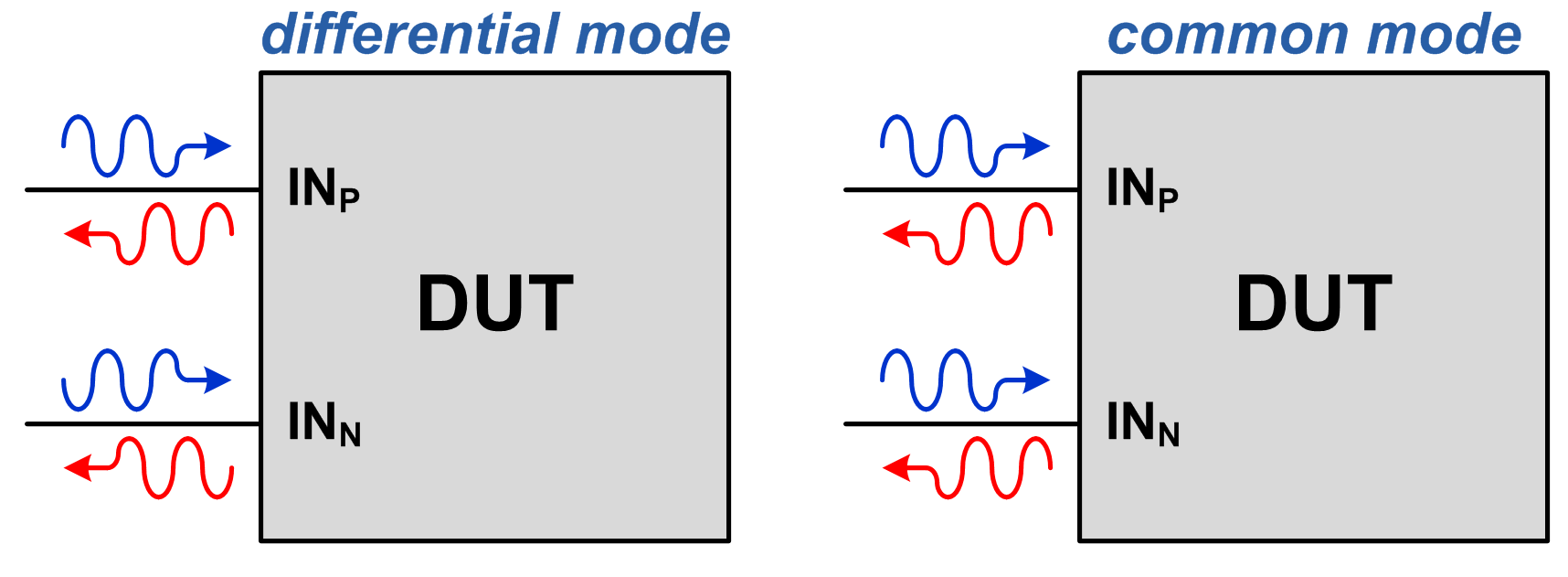SSZT478 may 2019 ADC12DJ5200RF
Modern high-speed analog-to-digital converters (ADCs) have enabled the direct sampling of radio frequency (RF) signals, which in many cases eliminates the need for mixing stages while increasing system flexibility and capability.
Traditionally, ADC signal and clock inputs have been represented by lumped element models. But for RF sampling converters, this approach is inadequate, since operating frequencies have increased to the point where a distributed representation is required.
In this three-part series, I’ll explain how to use scattering parameters, also known as S-parameters, in the design of direct RF sampling architectures.
Defining S-parameters
 Figure 1 Two-port Network Wave Quantities
Figure 1 Two-port Network Wave QuantitiesTypically, the VNA stimulates one port at a time (by driving an incident wave onto that port) while measuring the reflected waves on all ports. These measured quantities are complex, since each has a corresponding amplitude and phase. The process is repeated for each port at each test frequency.
For a two-port device, you can form four meaningful ratios from the measured data. These are traditionally denoted as sij, where i is the reflected port and j is the incident port. As I mentioned, assume that only one port is stimulated at a time, so the incident wave is zero for the other ports (terminated with the system’s characteristic impedance, Z0).
Equations 1 through 4 are for the four 2-port S-parameters. S11 and S22 represent the complex impedance for ports 1 and 2, respectively. S21 represents the transfer characteristics, with port 1 as the input and port 2 as the output (S12 being the same, but with port 2 as the input and port 1 as the output).
S11 = b1/a1 while a2 = 0 (1)
S21 = b2/a1 while a2 = 0 (2)
S12 = b1/a2 while a1 = 0 (3)
S22 = b2/a2 while a1 = 0 (4)
For a unidirectional device such as an amplifier (with port 1 as the input and port 2 as the output), you can view S11 as the input impedance, S21 as the frequency response, S12 as reverse isolation and S22 as the output impedance. A data converter is also a unidirectional device, but port 2 is typically digital. This has specific implications for both measurement and interpretation.
Extending S-parameters to Multiport and Differential Devices
| Designing for demanding requirements? | |

|
Meet the requirements of tomorrow's test and measurement applications with the fastest-ever ADC. |
 Figure 2 Differential- vs. Common-mode Waves
Figure 2 Differential- vs. Common-mode WavesFor linear devices without feedback between ports, superposition enables the calculation of differential and common mixed-mode S-parameters from single-ended S-parameter measurements (where only one port has an active incident wave at any given time). Modern high-performance VNAs also support the simultaneous stimulation of two ports with either differential- or common-mode waves.
Challenges When Measuring Data Converter S-parameters
Continue reading the series in the next article, So, what's a VNA anyway?https://e2e.ti.com/blogs_/b/analogwire/archive/2019/08/23/so-what-is-the-deal-with-frequency-response